Books To Take On A Desert Island
Actress Laura Linney shares her “books to take on a desert island” list:
“The Iliad” and “The Odyssey,” Homer (translated by Richmond Lattimore)
May I cheat and count them as one? I had an invaluable and inspiring high school teacher, Robert Cooley, who introduced me to both “The Iliad” and “The Odyssey” during my senior year. It was my first experience with the power of drama and poetry combined. Little did I know that I would spend the rest of my life (especially professionally) searching for experiences that would be as satisfying. The fact that I fell in love for the first time with the guy sitting next to me didn’t hurt my journey through those books either.
“Possession,” A.S. Byatt
This challenging, deeply satisfying read is also a wonderful reread. High in erudition and packed with mystery, it is a romance that takes your heart and mind on a suspenseful and rigorous adventure.
“East of Eden,” John Steinbeck
I read the great American “East of Eden,” strangely enough, during my first rail trip across Europe. After I completed each chapter I would rip the pages in a chunk from my paperback and leave them in whatever train car I was departing to lighten my load. There was something very comforting having something so American with me while being so far from home. The beauty of Steinbeck’s language stays with you for years, if not decades.
“The Artist as Citizen,” Joseph Polisi
Joseph Polisi is the president of the Juilliard School and one of the men I admire most. His beautiful book is a call to arms for all artists, and those who love the arts, to use their talents for the larger good of our culture, our communities and our world. A must-read for anyone in the arts.
“Red,” John Logan
John Logan’s stunning play about Mark Rothko testing and teaching his young assistant resulted in one of the best evenings I have ever had in the theater. I keep the script on my iPad to dip into for inspiration and lessons of conviction.
“You Learn by Living,” Eleanor Roosevelt
Though at times dated, this uplifting “manual” — written by one of the most interesting and significant women of the past century — is filled with the insight and advice I’d like to give to everyone.
“The Hug Machine,” Scott Campbell
Motherhood has come to me later in life. I really thought it had passed me by, but as fate would have it, I now get to read this heartwarming book to my son several times a week. I don’t think either of us will ever grow tired of it.
“Anna Karenina,” Leo Tolstoy
There is a section in “Anna Karenina” where Levin goes into the fields to assist the peasants with his harvest. It is hard work, at first awkward and frustrating. The labor requires strength, patience and a centered connection to one’s self before productivity and pleasure are possible. This passage has always stuck with me as an example of the level of commitment it takes to do anything well in life. I try to remind myself of Levin when life or work feels overwhelming. The rest of the book, of course, is just a big, fat masterpiece.
“Tales of the City,” Armistead Maupin
This is a book that literally changed my life. It gave me my career when I played Maryann Singleton in the mini-series. It has given me friendships that have elevated my understanding of love. And it has given me a connection to Armistead, an author and political activist whose character is so solid and profoundly good that I named my son after him.
“The Complete Plays,” Anthon Chekhov
Most theater actors learn to act doing Chekhov. His plays are a rite of passage. Fanatically popular, they are very hard to do well (in fact, it rarely happens), but when you do hit a moment right in Chekhov’s world, it brings you as close to the heart of humanity and beauty as you may ever get. “The Cherry Orchard” is a particular favorite.
As featured in T Magazine
The Social Media Fast
Incorporating intermittent fasting from a few things on a regular basis, frees up clutter of mind, body, and spirit. The more you pause, the more you pick up momentum for what needs to get done.
Here are three things to fast from in order to stay on task, on point, and on purpose.
1. Television
If you’re spending copious amounts of time in front of the tube watching the finest of reality and crime shows, don’t be surprised when crime becomes your reality. Try to refrain from watching TV a few days a week and replace that time with reading, meditating, and writing.
2. Social Media
Social media is an amazing tool for connecting with distant family and friends while learning about different schools of thought, products, and methodologies. And sometimes it’s just great for a damn good laugh and an uplifting quote to get you through the day.
But not everything you see is real. It’s critical to fast from social media at least once a week in order to cultivate organic, non-virtual connections with others. So much of what people do is influenced by what they see and read, and taking the time to tune out popular opinions helps you foster your own.
3. Food
Fasting helps cease not only the nonstop traffic imposed on your GI (gastro-intestinal) track but also the nonstop chatter of your mind.
A popular fast is from Sunday evening until Monday evening. Post fast, you may get some amazing idea and how to execute it! The pause often refuels the senses.
The next time you feel out of sync or downright distracted, ask yourself whether it’s time to pump the brakes.
Source: MindBodyGreen
Photo by Mario Sorrenti
Love Yourself
It’s that Valentine’s “love thing” time of year, a great time to show yourself some extra love Wait! Every day is a great time to show yourself some love!
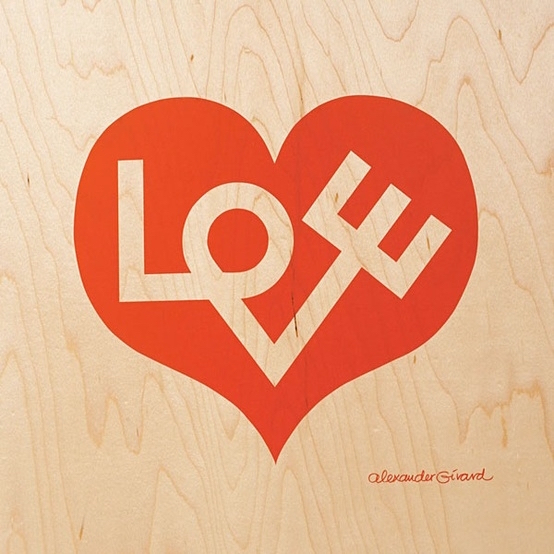
What is Joan Didion reading?
By and From Maria Papov of BrainPickings:
Having long lamented the dearth of reading lists by female cultural icons — amid a wealth of excellent but chromosomally skewed ones by such luminaries as Leo Tolstoy, Alan Turing, Brian Eno, David Bowie, Stewart Brand, Carl Sagan, and Neil deGrasse Tyson — I set out to find a worthy counterpoint. And what worthier addition than Joan Didion, one of the most singular and influential writers of our time, whose reflections on self-respect and grief are nothing short of life-changing?
Thanks to directors Susanne Rostock and Griffin Dunne, Didion’s nephew, who are making a documentary about her, I was delighted to obtain a list of the beloved author’s all-time favorite books. Given her strong convictions about the value of keeping a notebook, it’s at once utterly unsurprising and utterly delightful that the reading list is penned in her own hand, on a page of her notebook {to read Joan Didion’s List click her list below}:
Complement with Didion on telling stories, why she writes, her answers to the Proust Questionnaire, and Vanessa Redgrave’s gorgeous reading from the author’s memoir, then revisit the greatest books of all time, as voted by 125 famous contemporary authors.
Here is a delectable taste of the Didion documentary:
Joan Didion Documentary – We Tell Ourselves Stories in Order to Live from Rava Films on Vimeo.
Lifted from BrainPickings, so good we had to copy and paste!
Recommended Reading
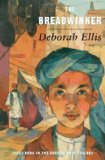 Malala Yousafzai, the activist and co-author of “I Am Malala: How One Girl Stood Up for Education and Changed the World” relished “The Wonderful Wizard of Oz,” the first book she read in the hospital when recovering from an attack by the Taliban. New York Times correspondent Jodi Kantor asks Malala Yousafzai: Is there one book you wish all girls would read? One all students would read? All girls: “The Breadwinner,” by Deborah Ellis. The book tells the story of a young girl who takes on the challenge of saving her family. I think it’s important for girls everywhere to learn how women are treated in some societies. But even though Parvana is treated as lesser than boys and men, she never feels that way. She believes in herself and is stronger to fight against hunger, fear and war. Girls like her are an inspiration. “The Breadwinner” reminds us how courageous and strong women are around the world.
Malala Yousafzai, the activist and co-author of “I Am Malala: How One Girl Stood Up for Education and Changed the World” relished “The Wonderful Wizard of Oz,” the first book she read in the hospital when recovering from an attack by the Taliban. New York Times correspondent Jodi Kantor asks Malala Yousafzai: Is there one book you wish all girls would read? One all students would read? All girls: “The Breadwinner,” by Deborah Ellis. The book tells the story of a young girl who takes on the challenge of saving her family. I think it’s important for girls everywhere to learn how women are treated in some societies. But even though Parvana is treated as lesser than boys and men, she never feels that way. She believes in herself and is stronger to fight against hunger, fear and war. Girls like her are an inspiration. “The Breadwinner” reminds us how courageous and strong women are around the world.
To buy the book: http://www.priscillawoolworth.com/store/breadwinner
“Through humor, you can soften some of the worst blows that life delivers. And once you find laughter, no matter how painful your situation might be, you can survive it.” -Bill Cosby
54 Movies That Get It Right
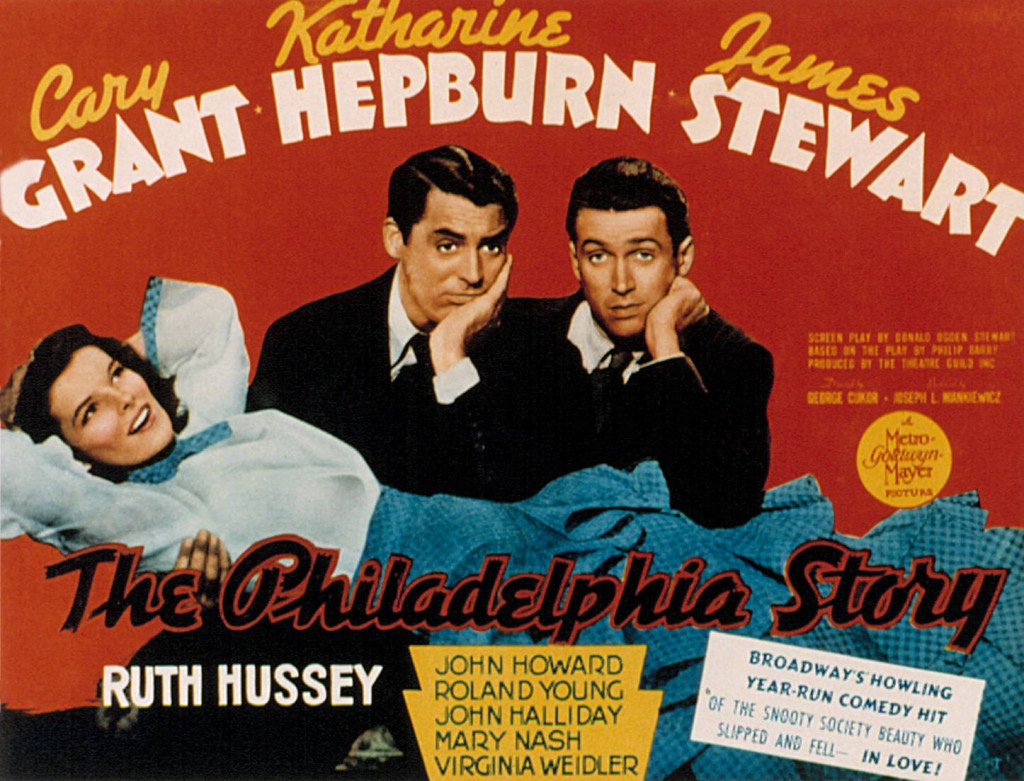
Back in 2005, Carina Chocano compiled a fabulous list of movies with realistic, nuanced portrayals of women. Her top picks include both old and newer films whose female characters are portrayed in a humanistic light. Whether they are funny, sad, romantic or wry, what the films have in common is female characters who are complicated, flawed, and recognizably human.
1930s-1940s
“Private Lives” (Sidney Franklin, 1931): A newly married woman winds up in the hotel room adjacent to her newly remarried ex during her honeymoon.
“Stage Door” (Gregory La Cava, 1937): A young woman fulfills her dream of becoming an actress.
“Holiday” (George Cukor, 1938): A free spirit gets engaged to a society girl who would like him to change, then falls in love with her free-spirited sister.
“The Women” (George Cukor, 1939): No men appear on-screen in this classic satire of women’s problems.
“The Philadelphia Story” (George Cukor, 1940): On the eve of her remarriage, a socialite is confronted with her ex-husband, whom she still loves, and a reporter who falls in love with her.
“The Lady Eve” (Preston Sturges, 1941): A smart, beautiful card shark tries to land a naive millionaire on a cruise ship, then, when he finds out, tricks him into believing she is someone else.
“Adam’s Rib” (George Cukor, 1949): A prosecutor and a defense lawyer, married to each other, take opposite sides on a case in which a woman tried to kill her cheating husband.
1950s-1980s
“All About Eve” (Joseph L. Mankiewicz, 1950): A legendary aging stage actress takes on a young assistant who tries to take her place on stage and in her life.
“Pat and Mike” (George Cukor, 1952): A talented female athlete teams up with the sportswriter who would be her manager.
“Nine to Five” (Colin Higgins, 1980): The classic working girls’ lament.
“Fast Times at Ridgemont High” (Amy Heckerling, 1982): The sexual initiation of high school girls and boys in the 1970s.
“Desperately Seeking Susan” (Susan Seidelman, 1985): A suburban housewife becomes obsessed with a female grifter she learns about from the personals.
“Broadcast News” (James L. Brooks, 1987): Two male TV reporters and a workaholic female producer work together and get involved in each other’s lives.
“Women on the Verge of a Nervous Breakdown” (Pedro Almodovar, 1988): A woman’s lover leaves her and she tries to find out why. When the police come looking for her to talk about her lover’s illegal activities, she hires a lawyer who turns out to be her lover’s new lover.
“Say Anything … ” (Cameron Crowe, 1989): The romantic initiation of high school girls and boys in the ’80s.
1990s
“Belle Epoque” (Fernando Trueba, 1992): During the Spanish Civil War, a young man deserts the army and winds up on the farm of a man with four beautiful and very different daughters.
“Heavenly Creatures” (Peter Jackson, 1994): Based on the true story of best friends who plot to kill one of their mothers when their parents come between them.
“Muriel’s Wedding” (P.J. Hogan, 1994): A lonely young woman obsessed with getting married comes into her own when she meets and moves in with a free-spirited stranger.
“Before Sunrise” (Richard Linklater, 1995): A young American guy and a young French girl meet on a train and spend a night in Vienna, and talk about life.
“Clueless” (Amy Heckerling, 1995): A high school girl in Beverly Hills tries to play matchmaker to her friends. Based on Jane Austen’s “Emma.”
“Home for the Holidays” (Jodie Foster, 1995): A comedy about a 40-year-old single mom who returns home for Christmas after losing her job and finds out her daughter plans to have sex that weekend.
“Sense and Sensibility” (Ang Lee, 1995): Adapted from Jane Austen’s novel, the story of two very different sisters and their love lives.
“The Daytrippers” (Greg Mottola, 1996): A woman discovers evidence that her husband is cheating and enlists her mother, father, sister and sister’s boyfriend to track him down over a day in New York City.
“Flirting With Disaster” (David O. Russell, 1996): A new dad sets out to find his birth parents along with his skeptical wife and the adoption agency worker who’d like to steal him away.
“Walking and Talking” (Nicole Holofcener, 1996): A woman deals with single life in New York as her best friend prepares to get married.
“Clockwatchers” (Jill Sprecher, 1997): Four very different women become friends at work, but when someone is accused of stealing, the friendship can’t withstand the pressure.
“Living Out Loud” (Richard LaGravenese, 1998): A poignant comedy about a woman who struggles to regain her identity after a divorce.
“Slums of Beverly Hills” (Tamara Jenkins, 1998): A young girl’s peripatetic life in the low-end apartment buildings of Beverly Hills, with her shiftless father and the wealthy cousin who comes to stay with them.
“Being John Malkovich” (Spike Jonze, 1999): A puppeteer discovers a portal into the head of actor John Malkovich and he, his wife and a woman he’s fallen in love with at work become obsessed with the idea of living another person’s (better) life.
“Election” (Alexander Payne, 1999): An uncommonly ambitious high school student finds herself locked in a battle of wills with a resentful high school teacher.
“Holy Smoke” (Jane Campion, 1999): A young woman who has joined a cult is deprogrammed by an expert, but her personality proves a challenge to him.
“Mansfield Park” (Patricia Rozema, 1999): An adaptation of Jane Austen’s novel, about a woman who struggles to remain true to herself in a society where an unmarried girl has no control over her own life.
2000s
“Ghost World” (Terry Zwigoff, 2000): Best friends and art geeks graduate from high school and drift apart when one of them becomes involved with a much older man.
“Girlfight” (Karyn Kusama, 2000): A young girl from a troubled home relies on her boxing talent.
“The Anniversary Party” (Alan Cumming, Jennifer Jason Leigh, 2001): An actress on the decline throws a party for her closest friends to celebrate the anniversary of her shaky marriage.
“Lovely & Amazing” (Nicole Holofcener, 2001): A comedy about the three daughters of an insecure woman dealing with identity issues in contemporary Los Angeles.
“Me Without You” (Sandra Goldbacher, 2001): The touching story of the complicated relationship of two lifelong best friends.
“Y Tu Mama Tambien” (Alfonso Cuaron, 2001): A woman in her 30s, secretly dying of cancer, leaves her husband and takes a road trip with two teenage boys who have been best friends since childhood.
“Adaptation” (Spike Jonze, 2002): An insecure screenwriter struggles to adapt a book by a journalist about whom he fantasizes, as the journalist adapts to being made into a character.
“The Good Girl” (Miguel Arteta, 2002): A woman bored with her job and her marriage hooks up with a cute young guy who thinks he’s Holden Caulfield.
“Sex Is Comedy” (Catherine Breillat, 2002): A female director directs a sex scene involving a prosthetic penis.
“Easy” (Jane Weinstock, 2003): A promiscuous young woman gives up on sex as she tries to figure out who she is.
“Funny Ha Ha” (Andrew Bujalski, 2003): A young girl navigates the murky waters of postgraduate life.
“Lost in Translation” (Sofia Coppola, 2003): A young woman with a splintering marriage meets an aging movie star in a hotel in Japan and a tender friendship develops.
“Pieces of April” (Peter Hedges, 2003): The black sheep struggles to make Thanksgiving dinner for her family before her mother dies of cancer.
“Before Sunset” (Richard Linklater, 2004): The couple meet in Paris 10 years after having failed to reconnect as planned, and talk about the turns their lives have taken.
“Eternal Sunshine of the Spotless Mind” (Michel Gondry, 2004): Depressed over their breakup, former lovers attempt to have their memories of each other erased.
“Look at Me” (Agnes Jaoui, 2004): An overweight, directionless young woman deals with the pressures of having a famous, critical father and a beautiful stepmother close to her own age.
“Saving Face” (Alice Wu, 2004): A young Chinese American doctor comes out as a lesbian after her mysteriously pregnant widowed mother moves in.
“Me and You and Everyone We Know” (Miranda July, 2005): A lonely female artist meets a lonely, recently divorced shoe salesman and tries to connect.
“I’m the One That I Want,” “Notorious C.H.O.,” “CHO Revolution”: Stand-up comedy by Margaret Cho that takes on sexism and racism in the funniest way possible.
“Six Feet Under” (The five seasons are on DVD): Best female characters on TV.
http://articles.latimes.com/2005/nov/13/entertainment/ca-DVDchicklist13
Pulitzer Prize List
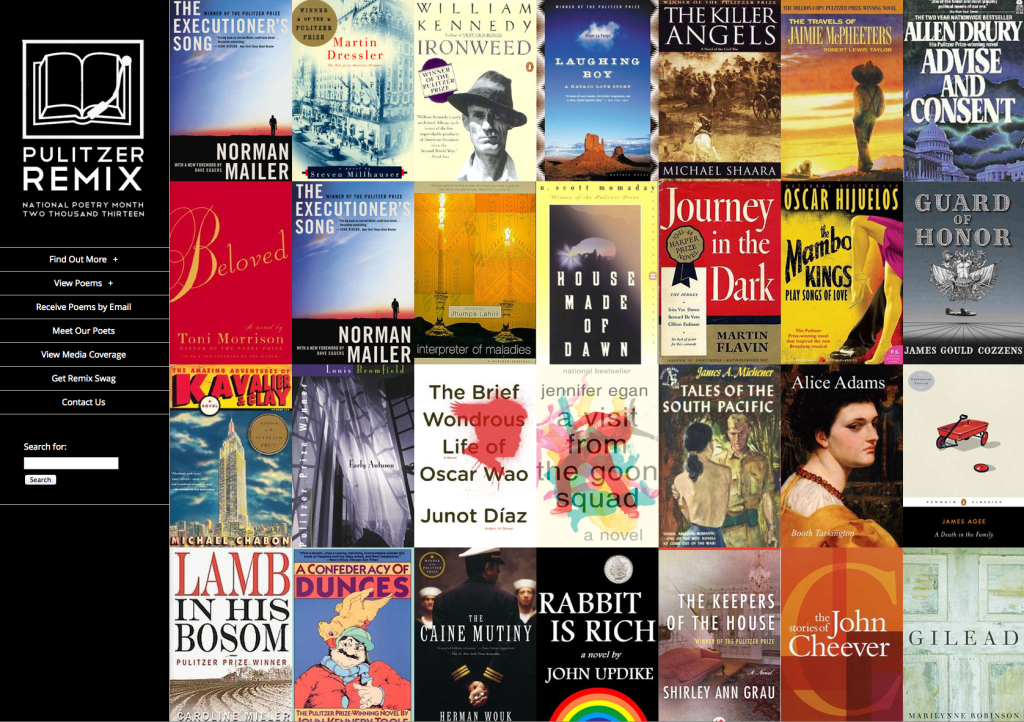
Reading, No Batteries Required
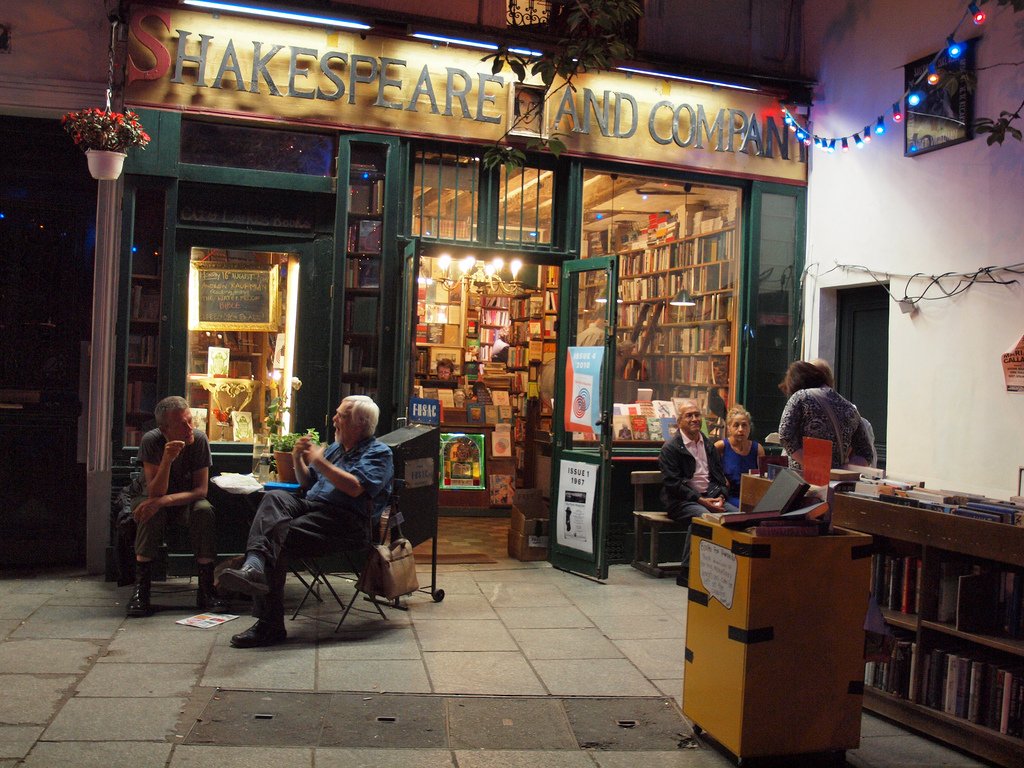
“A genuine book has a soul of its own. It is tactile, beautiful, accessible. It tells a story; it is itself a story.”
-Patt Morrison
Tenderly, the lover caressed his beloved. So pale, so smooth. He tilted his head forward, the better to inhale that scent — rich and enticing. Fingertip to spine, feeling every contour, he pressed his face closer — and turned a page.
I don’t know what you were thinking about, but I was talking about a book. A real book.
The Kindle and its ilk are just gizmos with pixilated screens. Hit the off button and its borrowed character vanishes. A genuine book has a soul of its own. It is tactile, beautiful, accessible. Not only do its contents tell us stories, it in itself is a story. That rare copy of Sir Isaac Newton’s “Principia” — did his own august eyes behold it? And that first edition of “Pride and Prejudice” — whose ladylike hands held it, turned its pages by candlelight? The old copy of “The Cat in the Hat” is beloved not only for the tale it tells but for the crayoned personalization added by each generation of a family’s children.
Do you mock books as old school? Wise up. Remember the 8-track tape that was supposed to be the dernier cri? Vanished into the recycling bin of history. The DVD gets supplanted byBlu-ray, which will soon be made obsolete by something else.
Yet paper and parchment are still around, still legible, still “working” multiple centuries later. You don’t need to wait for the page to load. All the technology it needs to work is the human eye. No password, no batteries required. A book doesn’t stop working when it’s dropped. You can read it on the tarmac even after the command to turn off all electronics. It isn’t ruined when it gets wet (the salvage operation after the 1986 Central Library fire proved that, and how many books have I dropped in the bathwater and dried them out?). The only grave threat to a book is a flame, accidental or deliberate. Books are immensely, symbolically, mystically powerful; the fact that fearful humans ritually burn them, the way they once burned witches, attests to it. No book, someone said, has the power of a burned book.
I owe to books so much of what is rich and delicious in my life. Landlocked as I was growing up in a small town, the book was a door. To open a book was to open a door to — anyplace. It was a time machine crafted of paper, a 300-page passport into Dickens’ Victorian London, where children were swept into pickpocket gangs or beaten and half-starved in factories; into the silent desert tombs of Howard Carter’s expedition to find Tutankhamen; into the thick of the Civil War at Antietam with Clara Barton; or off on a comet with Jules Verne’s imagination as my guide.
I journeyed to places, imaginary and real, that I could never have seen or known — except for this pound or so of paper and ink in my hand. I had never been aboard a yacht, but I knew it down to the capstan. I had never climbed Mt. Everest, but George Leigh Mallory took me there. These were my friends and my teachers, as real as any kids in the playground, as any teachers at the chalkboard.
We had no bookstore and, to paraphrase Scout in “To Kill a Mockingbird,” nothing much in the way of money to spend, anyway. My parents had acquired for me a set of brilliantly illustrated children’s encyclopedias by driving 11 miles out of town to the big supermarket. There, for every $25 you spent on groceries, a dollar bought you another volume of the encyclopedia. A couple of times a year, a book fair came to town and set up shop in the school gym, and my parents managed to let me buy two books. I think I’ve taken less time to choose a car than I took to walk slowly through those rows of tables to make my pick.
One of those book-fair books quite literally changed my life — a young people’s biography of Nellie Bly. She was the 19th century woman who, despite being banned from voting, managed to become a reporter, exposing political corruption and writing dispatches from around the world. That, I decided, was exactly what I wanted to be. (The illustration of her doing all this in a fetching hat didn’t dent the appeal either.) Stashed away somewhere, I still have that book.
We are so accustomed to books that we have stopped thinking of how astonishing they are. Stop and think of that. Here is what a book can do. Using symbols, patterns of lines and curves of ink arranged on a rectangle of processed wood pulp, people you have never known, people who have been dead for half a millennium, can talk to you across the centuries. Their words, their thoughts, make them live again. From their graves, they can make us laugh, make us angry, make us weep, make us understand them.
I was just reading a book called “Immortality: the Quest to Live Forever and How It Drives Civilization.” We can ease up on that right now. We already have a kind of immortality. It’s called a book.-Patt Morrison
http://articles.latimes.com/2012/apr/22/opinion/la-oe-morrison-book-love-20120422
Jodie Foster shares her favs with LOLA
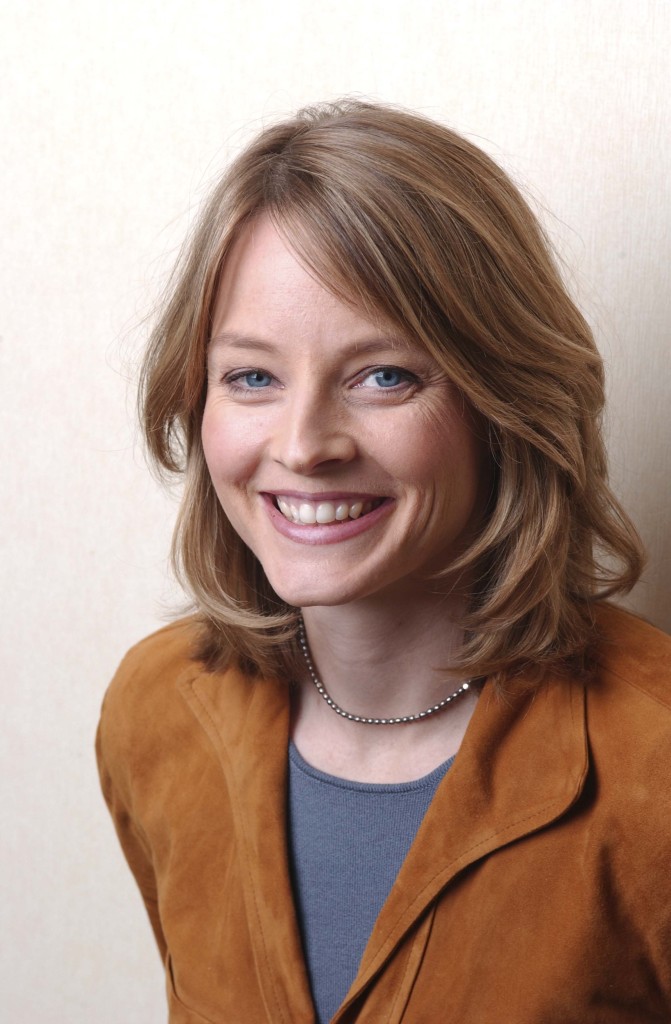
Reading A Book: Print or Digital?

PLAYING FOR CHANGE (http://playingforchange.com) is a multimedia music project that seeks to inspire, connect, and bring peace to the world through music. Some of the musicians that have participated are Cathy Jordan (Sligo, Ireland), Keiko Komaki (Kagoshima, Japan),
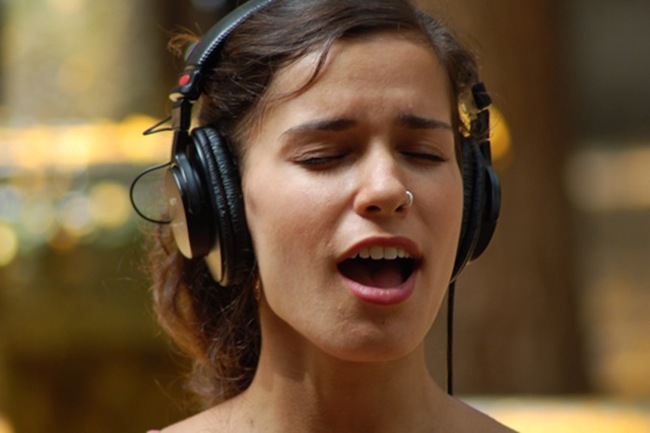
Lila Downs (Tlaxiaco-Oaxaca, Mexico), Manuela Meja (Medellin, Colombia), Oneness Choir (Varadaya Palem, India), Rosyln Williams (Kingston, Jamaica), Sherieta Lewis (Kingston, Jamaica), Sinamuva ( Umlazi, South Africa), Tal Ben Ari “Tula” (Tel Aviv, Israel), The PPC-Novisad String Trio (Novi Sad, Serbia),Titi Tsira (Guguletu, South Africa),

Toto La Momposina (Bogota, Columbia), Yu Hatakeyama (Tokyo, Japan) and Adrian Buono (Buenos Aires, Argentina),Afro Fiesta (Capetown, South Africa, Baaba Maal (Podor, Senegal), Bono (Dublin, Ireland), and David Broza (Tel Aviv, Israel) to name a few.
A must see movie for all girls, young and old:

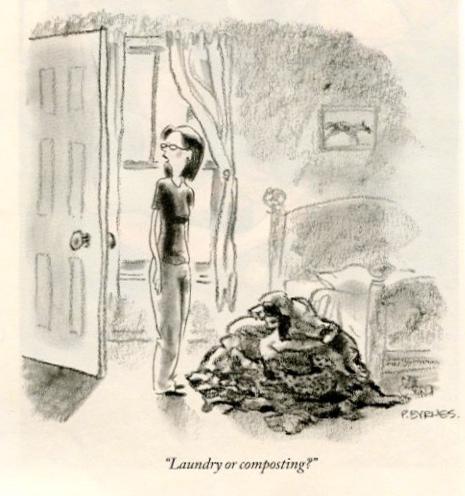
These glorious insults are from an era before the English language got boiled down to 4-letter words:
A member of Parliament to Disraeli: “Sir, you will either die on the gallows or of some unspeakable disease.”
“That depends, Sir,” said Disraeli, “whether I embrace your policies or your mistress.”
“He had delusions of adequacy.” – Walter Kerr
“He has all the virtues I dislike and none of the vices I admire.” – Winston Churchill
Lady to Winston Churchill, If I were your wife, I would give you poison. To which Churchill responded, madam, if I were your husband, I would take it!
“I have never killed a man, but I have read many obituaries with great pleasure.” – Clarence Darrow
“He has never been known to use a word that might send a reader to the dictionary.” – William Faulkner (about Ernest Hemingway).
“Thank you for sending me a copy of your book; I’ll waste no time reading it.” – Moses Hadas
“I didn’t attend the funeral, but I sent a nice letter saying I approved of it.” – Mark Twain
“He has no enemies, but is intensely disliked by his friends..” – Oscar Wilde
“I am enclosing two tickets to the first night of my new play; bring a friend…. if you have one.” – George Bernard Shaw to Winston Churchill
“Cannot possibly attend first night, will attend second…. if there is one.” – Winston Churchill, in response.
“I feel so miserable without you; it’s almost like having you here.” – Stephen Bishop
“He is a self-made man and worships his creator.” – John Bright
“I’ve just learned about his illness. Let’s hope it’s nothing trivial.” – Irvin S. Cobb
“He is not only dull himself; he is the cause of dullness in others.” – Samuel Johnson
“He is simply a shiver looking for a spine to run up.” – Paul Keating
“In order to avoid being called a flirt, she always yielded easily.” – Charles, Count Talleyrand
“He loves nature in spite of what it did to him.” – Forrest Tucker
“Why do you sit there looking like an envelope without any address on it?” – Mark Twain
“His mother should have thrown him away and kept the stork.” – Mae West
“Some cause happiness wherever they go; others, whenever they go…” – Oscar Wilde
“He uses statistics as a drunken man uses lamp-posts… for support rather than illumination.” – Andrew Lang (1844-1912)
“He has Van Gogh’s ear for music.” – Billy Wilder
“I’ve had a perfectly wonderful evening. But this wasn’t it.” – Groucho Marx
If you were around in 1919 (just before prohibition started) and came upon the following poster…

I mean seriously, Would you quit drinking? Me Neither!
a few of her favorite things…

Here are some of Jane Goodall’s favorite books:
- All Creatures Great and Small by James Herriot
- Animal Liberation by Peter Singer (Jane instantly became a vegetarian after reading this book.)
- Jane Eyre by Charlotte Bronte
- Pride and Prejudice by Jane Austen
- Silent Spring by Rachel Carson
- The Lord of the Rings by J. R. R. Tolkein
- The No. 1 Ladies’ Detective Agency series by Alexander McCall Smith
- The Wind and the Willows by Kenneth Grahame
- The novels of Barbara Pym
- The writings of Thomas Hardy
A note from Jane:
Also to be included here is the Bible, for its beautiful language, and a number of Shakespeare’s works. I knew these books so well while growing up and am sure they helped to shape who I am today, my values, and my love of writing.
A note from Jane:
Three books of my childhood probably had the greatest impact on my life. The Story of Doctor Dolittle (by Hugh Lofting) and Tarzan of the Apes (by Edgar Rice Burroughs) inspired me to understand what animals were trying to tell us and instilled within me an equally strong determination to travel to Africa, live with animals, and write books about them. The Miracle of Life was a large book my grandmother got for free by saving up coupons from cereal packets. It was by no means a book intended for children. It contained discussions of animal behaviour, plant biology, the workings of the human body, and the history of some of the great discoveries in biology and medicine. It was illustrated with black and white drawings and photos and helped to satisfy my burning desire to learn about these things.






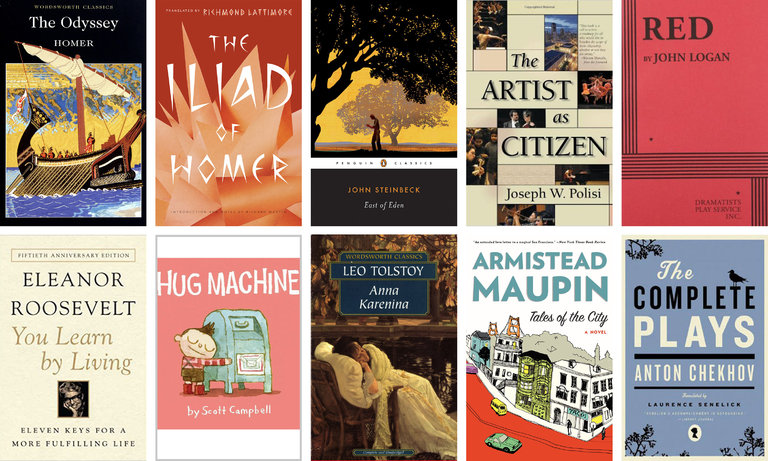
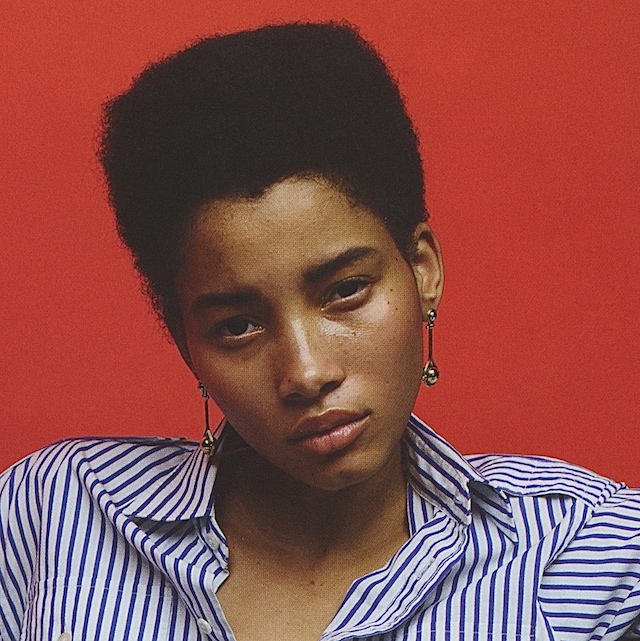


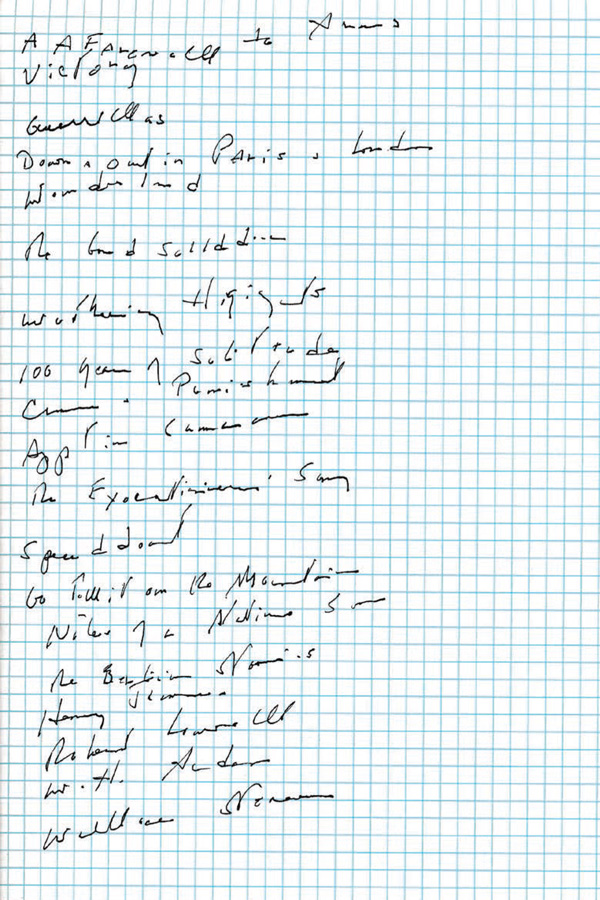


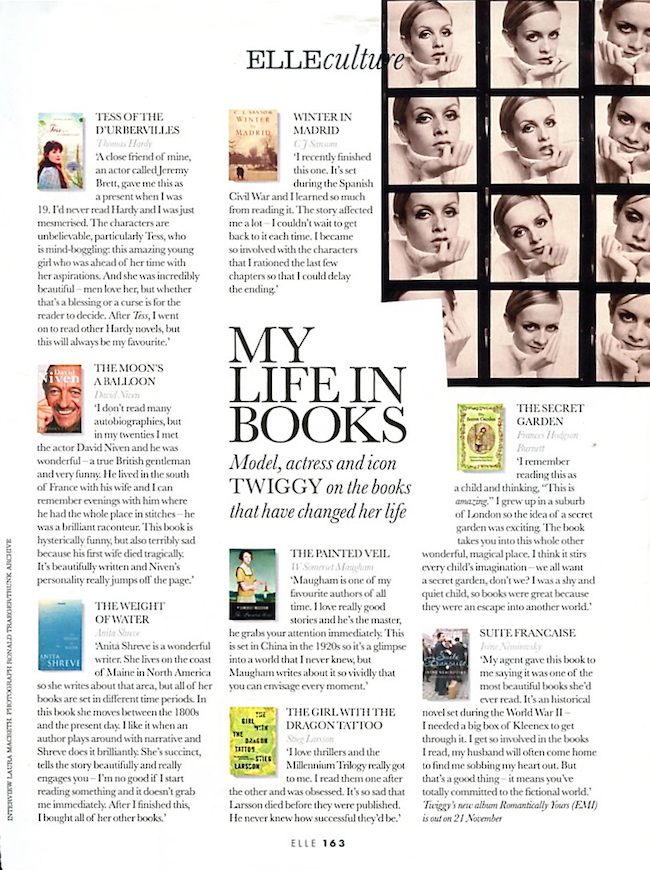
it was a great party but not the best!
Hello there! This is my first comment here so I just
wanted to give a quick shout out and say I really enjoy reading your posts.
Can you suggest any other blogs/websites/forums that cover the same subjects?
Thanks a lot!
Love the website– extremely user pleasant and whole lots to see!